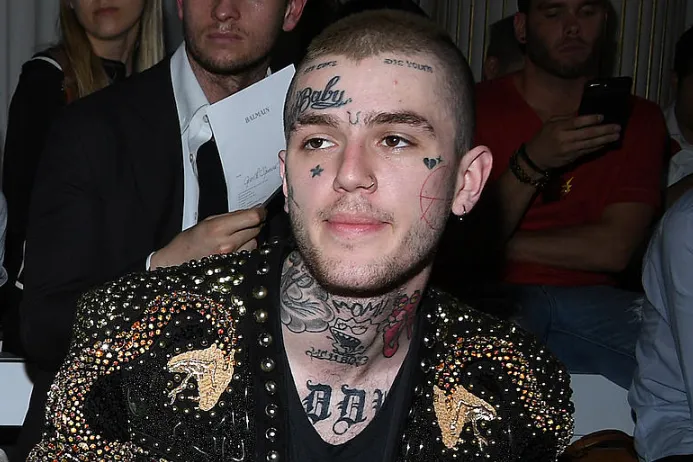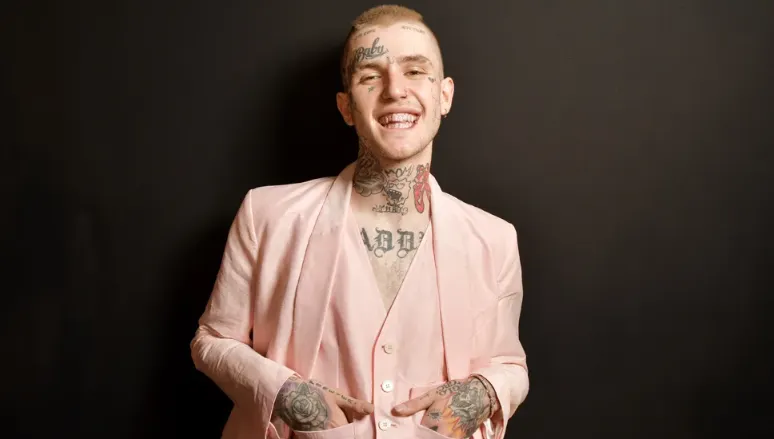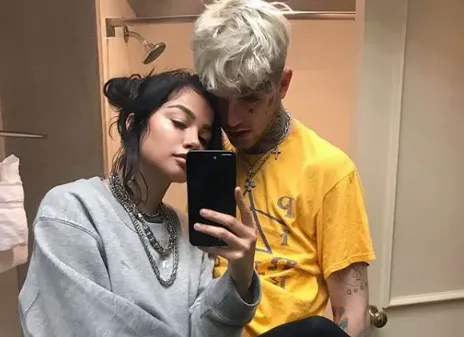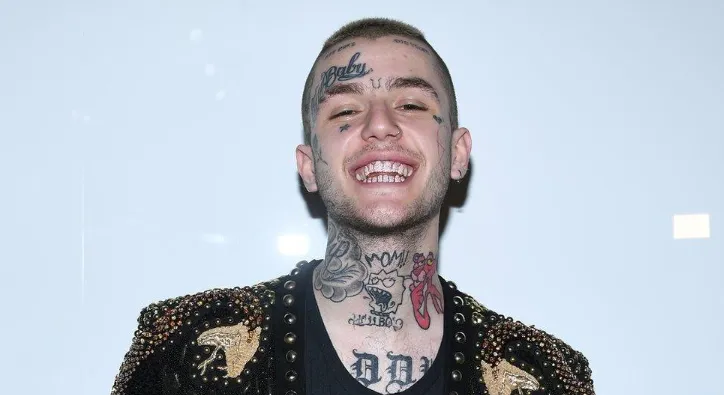Lil Peep, whose real name was Gustav Elijah Åhr, was born on November 1, 1996. Tragically, he passed away on November 15, 2017, at the age of 21.
Many fans are curious about Lil Peep’s age, especially after his death. He was born on November 1, 1996, and tragically passed away on November 15, 2017, at just 21 years old. Lil Peep’s short life left a lasting impact on the music world.
His work continues to inspire new artists and fans alike. Understanding his age helps us appreciate the brief yet powerful legacy he left behind. Let’s delve deeper into his life and career to understand why Lil Peep remains influential even years after his passing.
Contents
Quick Bio
| Category | Details |
| Full Name | Gustav Elijah Åhr |
| Stage Name | Lil Peep |
| Date of Birth | November 1, 1996 |
| Place of Birth | Allentown, Pennsylvania, USA |
| Date of Death | November 15, 2017 |
| Age (at the time of death) | 21 years old |
| Nationality | American |
| Ethnicity | Mixed (Swedish, German, Irish) |
| Zodiac Sign | Scorpio |
| Religion | Atheist |
| Profession | Rapper, Singer, Songwriter |
| Genres | Emo rap, Alternative rock, Hip-hop, Cloud rap |
| Years Active | 2014–2017 |
| Notable Works | Come Over When You’re Sober, Pt. 1, Hellboy, Crybaby |
| Father | Karl Johan Åhr |
| Mother | Liza Womack |
| Siblings | Karl “Oskar” Åhr (brother) |
| Height | 6 feet 1 inch (185 cm) |
| Weight | 74 kg (163 lbs) |
| Body Type | Slim |
| Eye Color | Brown |
| Hair Color | Blonde (often dyed in various colors) |
| Tattoos | Extensive tattoos covering his face, neck, and body |
| Relationship Status | Single |
| Past Relationships | Arzaylea Rodriguez, Bella Thorne |
| Net Worth | Estimated $300,000 – $700,000 |
| Cause of Death | Accidental overdose (Fentanyl & Xanax) |
| Social Media Impact | A huge influence on emo rap and underground music culture |
| Legacy | Considered a pioneer of emo rap, inspiring artists like Juice WRLD, XXXTentacion, and more |
Who Is Lil Peep?

Lil Peep, born Gustav Elijah Åhr on November 1, 1996, was an American rapper, singer, and songwriter known for blending emo, punk rock, and hip-hop elements into a unique musical style. He gained prominence in the mid-2010s as a pioneer of the “emo rap” movement, influencing a new wave of artists who mixed raw, emotional lyrics with trap beats and alternative rock influences.
Raised in Long Island, New York, Lil Peep was deeply influenced by underground rap and rock music, drawing inspiration from artists like My Chemical Romance, Blink-182, and Gucci Mane. After dropping out of high school, he moved to Los Angeles to pursue music and released songs on platforms like SoundCloud. His early mixtapes, including Crybaby and Hellboy, gained traction among online communities, propelling him into underground fame.
Lil Peep’s debut studio album, Come Over When You’re Sober, Pt. 1, was released in 2017 and solidified his status as a rising star. His music often explored themes of depression, heartbreak, drug use, and alienation, resonating deeply with fans who connected with his vulnerability and authenticity.
Tragically, Lil Peep passed away on November 15, 2017, at the age of 21, due to an accidental overdose of fentanyl and Xanax. His death sent shockwaves through the music industry and highlighted the dangers of substance abuse. Despite his short career, his influence remains strong, with posthumous releases and tributes continuing to honor his legacy. Lil Peep is remembered as a trailblazer who reshaped modern rap and alternative music.
Early Life
Lil Peep, born Gustav Elijah Åhr, was a unique soul. His journey began in the vibrant city of Allentown, Pennsylvania, and he later moved to Long Island, New York. From an early age, it was clear that Lil Peep was destined to make a mark. But what were the key influences in his early life? Let’s delve into his background to find out.
Family Background
Gustav came from a family with an interesting mix of backgrounds and talents. His mother, Liza Womack, was a first-grade teacher, and his father, Karl Johan Åhr, was a college professor. However, their marriage did not last, and they parted ways when Gustav was just a teenager.
Despite the separation, his parents played vital roles in shaping his character. His mother, Liza, always supported his artistic inclinations. She even bought him his first microphone, a gesture that would spark his passion for music.
Childhood Influences
Growing up, Lil Peep was heavily influenced by various music genres and artists. He enjoyed listening to everything from punk rock to rap. Some of his favorite artists included Kurt Cobain of Nirvana and rappers like Gucci Mane. This eclectic mix of influences helped him create his unique sound later in life.
Gustav wasn’t the most diligent student in school. He often found the traditional education system stifling. Instead, he preferred expressing himself through music and art. He was known to be a creative child, often seen doodling in his notebooks.
His childhood friends remember him as someone who always stood out. He had a different way of looking at the world, which was intriguing and inspiring. His early life experiences, both good and bad, played a significant role in shaping his future career.
Rise To Fame
From underground sensation to global icon, Lil Peep’s journey to fame is a tale of talent, resilience, and serendipity. His unique blend of emo, punk, and rap quickly captured the hearts of many. But how did he rise to such heights? Let’s explore the key moments that defined his meteoric rise.
Initial Breakthrough
Every artist has that one moment when the spotlight finally finds them. This moment came with Lil Peep’s release of his “Lil Peep; Part One” mixtape in 2015. This was not just any mixtape; it was a heartfelt collection of songs that resonated with a generation seeking authenticity.
With tracks like “Star Shopping” and “Beamer Boy,” Lil Peep’s raw emotion and unique style stood out. It wasn’t long before the mixtape gained traction on SoundCloud, amassing thousands of plays. The buzz around his music started to grow, and he began to build a dedicated fanbase.
Major Collaborations

As Lil Peep’s popularity soared, so did the opportunities for collaboration. One of the most significant partnerships was with rapper Wicca Phase Springs Eternal. Together, they released “Absolute in Doubt,” a track that further solidified Peep’s place in the emo-rap scene.
Another game-changer was his collaboration with XXXTentacion on the song “Falling Down.” This posthumous release became a massive hit, introducing Lil Peep to an even broader audience. It was a bittersweet success, highlighting both his talent and the tragic loss felt by the music community.
Here are some of his notable collaborations:
- “Awful Things” with Lil Tracy
- “Spotlight” with Marshmello
- “Sunlight on Your Skin” with iLoveMakonnen
Each collaboration brought something new, showcasing Lil Peep’s versatility and ability to connect with different artists and genres.
Musical Style
Lil Peep was known for his unique sound that captivated many fans worldwide. His music was different and fresh, blending various genres that made him stand out. Curious about what made his musical style so special? Let’s dive into it!
Genre Fusion
Lil Peep’s music was a mix of hip-hop, punk, and emo. He didn’t stick to one genre. Instead, he created a new sound by combining different styles. This mix was unusual but worked beautifully. It was like putting together puzzle pieces you didn’t know could fit. His songs often had rap verses with a rock guitar in the background, giving listeners a new experience.
| Genre | Influences |
| Hip-Hop | Artists like Gucci Mane and Future |
| Punk | Bands like NOFX and My Chemical Romance |
| Emo | Influences from the 2000s emo scene |
Lyrical Themes
Lil Peep’s lyrics were deep and often dark. He talked about his struggles with mental health, love, and loneliness. These themes connected with many people, especially those going through similar issues. His honesty made his music relatable.
Here are a few common topics in his songs:
- Depression
- Heartbreak
- Drug use
- Personal struggles
His song “Awful Things” is a great example. It discusses the pain of a broken relationship, and you can feel the emotion in his voice.
In conclusion, Lil Peep’s musical style uniquely blended genres and heartfelt lyrics. It resonated with many fans and left a lasting impact on the music world. His innovative approach and honest storytelling continue to inspire artists and listeners alike.
Cultural Impact
Lil Peep, a young artist who left us too soon, has had a huge cultural impact. Even though his time was short, his influence is still felt today. His music and style have touched many hearts and inspired a new generation of fans and artists.
Fanbase
Lil Peep’s fanbase is a testament to his widespread influence. His followers are not just limited to one country or one type of person. He has fans worldwide, from the USA to Europe and beyond. What makes his fanbase special?
- Global Reach: His music speaks to people everywhere, no matter where they live.
- Emotional Connection: His lyrics are raw and real, helping fans deal with their feelings.
- Community Support: His fans support each other, creating a strong, caring community.
These fans keep his memory alive by sharing his music and discussing his impact. They honor him by staying connected through social media, meet-ups, and fan art.
Fashion Influence
Lil Peep was not just a musician; he was also a fashion icon. His unique style mixed different trends and ideas, blending punk, goth, and hip-hop, making him stand out.
| Style Element | Impact |
| Tattoos | Lil Peep’s face and body tattoos became a signature part of his identity, inspiring many fans to express themselves similarly. |
| Colorful Hair | His ever-changing hair colors showed his bold personality and encouraged fans to experiment with their looks. |
| Clothing | He often wore a mix of high fashion and streetwear, creating an eclectic style that many try to emulate. |
It’s not just about looking cool; it’s about expressing who you are. Lil Peep showed his fans that it’s okay to be different and to dress in a way that makes you happy. This message has had a lasting impact on fashion and self-expression.
Personal Struggles
Lil Peep faced personal struggles, including addiction and mental health issues. These struggles deeply affected his music and life.
Lil Peep, born Gustav Elijah Åhr, faced many personal struggles. These struggles shaped his life and music. His battles with mental health and substance abuse were well-documented. Understanding these aspects gives insight into his short yet impactful life.
Mental Health
Lil Peep often spoke about his mental health struggles. Depression and anxiety were constant companions. He used his music to express his feelings. Fans connected with his honest lyrics. This connection made his music deeply relatable. But his mental health issues were serious. They affected his daily life and relationships. Despite his fame, he felt isolated and misunderstood.
Substance Abuse
Substance abuse was another significant challenge. Lil Peep used drugs to cope with his pain. This coping mechanism led to addiction. His lyrics often referenced drug use. This transparency was both a cry for help and an artistic choice. Sadly, his substance abuse contributed to his untimely death. It serves as a stark reminder of the dangers of addiction. “`
Untimely Death
Lil Peep, born Gustav Elijah Åhr, was a talented American rapper, singer, and songwriter whose life was tragically cut short at the age of 21. Known for his unique blend of hip-hop, emo, and rock music, Lil Peep quickly rose to fame and amassed a devoted following. However, his promising career was abruptly ended by his untimely death, leaving his fans and the music community in shock.
Circumstances
On November 15, 2017, Lil Peep was found unresponsive on his tour bus in Tucson, Arizona. He had been scheduled to perform that evening but was discovered by his manager, who noticed something was wrong. Despite efforts to revive him, Lil Peep was pronounced dead at the scene. The cause of death was later revealed to be an accidental overdose of fentanyl and Xanax, a dangerous combination that has claimed the lives of many young artists.
| Details | Information |
| Date | November 15, 2017 |
| Location | Tucson, Arizona |
| Cause of Death | Accidental Overdose |
Community Reaction
The news of Lil Peep’s death sent shockwaves through the music community and his fanbase. Many fans and fellow artists used social media to express their grief and disbelief. Tributes poured in from all corners of the world, highlighting Lil Peep’s impact in such a short time.
- Fellow Musicians: Artists like Post Malone, Diplo, and Marshmello shared heartfelt messages, recalling their memories and collaborations with Lil Peep.
- Fans: Fans held vigils and created online memorials, sharing stories and posting artwork in his honor.
- Family: Lil Peep’s mother, Liza Womack, became a vocal advocate for mental health and drug awareness, often discussing the importance of addressing these critical issues.
The reaction to his death also sparked conversations about the pressures faced by young artists in the music industry. Many called for better support systems and resources to help artists cope with fame and the accompanying challenges.
In conclusion, Lil Peep’s untimely death serves as a poignant reminder of the fragility of life and the importance of mental health and substance abuse awareness. His legacy continues to influence new generations of musicians and fans, ensuring his voice and message will not be forgotten.
Legacy

Born Gustav Elijah Åhr, Lil Peep was a shining star who left us too soon. Despite his short life, he greatly impacted the music world. His unique emo, punk, and rap blend resonated with many, creating a devoted fanbase. But what keeps his memory alive? Let’s dive into the legacy of Lil Peep.
Posthumous Releases
After Lil Peep’s tragic passing at 21, his music continued through posthumous releases. This was a way for fans to feel connected to him, even after his departure. His team worked tirelessly to ensure his voice was still heard. Albums like “Come Over When You’re Sober, Pt. 2” and “Everybody’s Everything” were released, showcasing his talent and vision. These albums, filled with raw emotion and honesty, helped to keep his spirit alive and introduced his music to new listeners.
Influence On New Artists
Lil Peep’s innovative style has influenced a new generation of artists. His ability to blend genres has inspired many to push boundaries and create their unique sounds. Artists like Juice WRLD and XXXtentacion have cited Lil Peep as a major influence. Even after his passing, his impact on the music industry continues to grow. New artists look up to him, not just for his music but for his authenticity and willingness to be vulnerable. That’s something rare and special in the music world.
In conclusion, Lil Peep’s legacy is a testament to his talent and impact on so many lives. His music continues to inspire, and his influence is still felt today. His posthumous releases have allowed his voice to live on, and his style has paved the way for new artists. Lil Peep may be gone, but his legacy will never fade.
Continued Relevance
Even years after his untimely passing, Lil Peep remains a significant figure in the music world. His influence continues to shape the landscape of modern music and pop culture. Let’s dive into how his legacy endures through heartfelt tributes and cultural references.
Tributes
Lil Peep’s fans and fellow artists have kept his memory alive through various tributes. Artists often mention Lil Peep in their songs or dedicate their performances to him, testifying to his lasting impact on the music industry.
For instance, in 2020, the rapper Juice WRLD often spoke about how Lil Peep influenced his music. Many artists, including Post Malone and Marshmello, have also paid him homage in their unique ways. These tributes are not just about remembering Lil Peep but also about celebrating the genre-blending music he pioneered.
Cultural References
Beyond music, Lil Peep’s influence can be seen in various cultural references. His style and persona have left a lasting mark on everything from fashion to social media trends. Lil Peep’s signature look—a mix of punk, emo, and streetwear—inspires fashion lines and influencers worldwide.
Moreover, his lyrics often touch on themes of mental health, love, and existential angst, resonating deeply with a younger audience. This connection has made him a symbol of the struggles and triumphs of many. Have you ever noticed how often his quotes pop up on Instagram captions and Twitter posts? That’s because his words still speak to so many, even today.
So, what makes Lil Peep’s legacy so enduring? It’s simple — his unique blend of music, fashion, and raw emotion. He spoke to a generation that felt misunderstood, creating a lasting impact that continues to be felt in various facets of culture.
Social Media Profile
| Platform | Link |
| Wikipedia | Click here |
| Click here |
Frequently Asked Questions
How Old Is Lil Peep Now?
Lil Peep was born on November 1, 1996. He tragically passed away on November 15, 2017. He would have been 26 years old in 2023.
How Old Was Peep Before He Died?
Peep was 21 years old when he died. He passed away on November 15, 2017.
What Ethnicity Is Peep?
Peep was of Swedish and Irish descent. His real name was Gustav Elijah Åhr. He was a famous rapper and singer.
How Old Was Peep In 2014?
Peep, also known as Lil Peep, was born November 1, 1996. 2014, he was 17 or 18 years old, depending on the month.
How Old Was Lil Peep When He Died?
Lil Peep was 21 years old when he died.
Conclusion
Many fans are interested in Lil Peep’s age. He achieved so much in his short life, and his music continues to inspire people worldwide. Remembering his age helps us appreciate his impact. Lil Peep’s legacy lives on through his art and fans.
